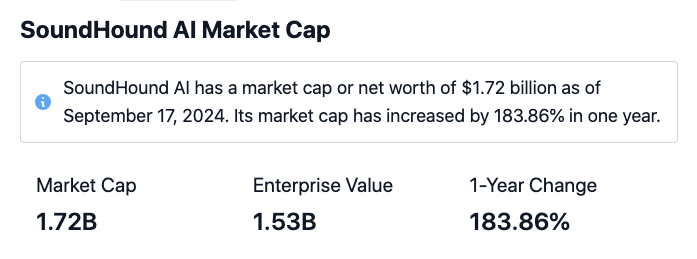Top 10 Tips On Assessing The Market Coverage For Ai Stock Predicting/Analyzing Trading Platforms
The coverage of markets on the trading platforms that use AI analysis of stocks is vital as it determines the markets and assets you are able to access. If you choose a platform with extensive coverage, you are able to diversify your portfolio and make the most of opportunities across the globe. It is also possible to adapt to different trading methods. Here are 10 tips on how to evaluate the coverage offered by platforms.
1. Evaluate Supported Asset Classes
Stocks: Ensure that the platform includes stocks from all the major stock exchanges, including NYSE, NASDAQ and LSE.
ETFs Check whether the platform allows you to select from a wide range of ETFs, which gives you an array of exposure.
Futures and options. Find out if your platform offers derivatives, such as options, futures or other instruments leveraged.
Forex and commodities. Check to see if there are forex pairs available, as well as precious metals, commodities for energy, and other agricultural commodities.
Check if the platform you are using is compatible with major cryptocurrencies such as Bitcoin and Ethereum and other coins.
2. Check for Coverage Area
Global markets. Make sure your platform is able to cover the largest market in the world, such as North America Europe Asia-Pacific and emerging countries.
Regional focus Verify that the platform has a focus on certain regions or markets which are in line with your interest in trading.
Local exchanges - Check to find out if there are local or regional exchanges available in relation to your location and your strategy.
3. Compare Real-Time Data with Delayed Data Delayed Data
The availability of real-time data is crucial to speed up decision-making particularly when trading is in the active phase.
Delayed data - Check whether delayed data is available for free or is available at a lower price. This might be enough for investors who are looking to invest over the long run.
Data latency. Check if the platform minimizes delays for real-time information feeds particularly when it comes to high-frequency trading.
4. Evaluation of Data from the Past
The breadth and depth of data from the past: Make sure that the platform has extensive historical data (e.g. for at minimum 10 years) to allow backtesting.
Examine the detail in the historical data.
Corporate actions: Verify if historical data accounts for dividends, stock splits as well as other corporate actions.
5. Check the Market Depth and Place an Order Books
Data Level 2: Make sure that the platform provides Level 2 (order book depth) to provide better price discovery.
Bid-ask spreads: Check if the platform displays real-time bid-ask spreads to ensure exact pricing.
Volume data: Ensure that the platform is equipped with detailed information on volume for analysing liquidity and market activities.
6. Review the extent of coverage for Indices and Sectors
Major indexes - Ensure that your platform works with major indexes like S&P 500 and FTSE 100 for benchmarking.
Information for specific industries If you're looking to do a more targeted analysis, check if there are any data available for specific sectors.
Custom-made indices. See if it is possible to make or track custom indices according to your own criteria.
7. Assess the impact of integration with News and Sentiment
News feeds - Ensure the platform is integrating real-time news feeds for market-moving stories from reputable (e.g. Bloomberg or Reuters) sources.
Sentiment Analysis: Check whether the platform has tools for analyzing sentiment that are built on social media, news or other sources of data.
Event-driven strategies: Determine whether the platform is compatible with events-driven trading strategies (e.g. earnings announcements, economic reports, etc.).
8. Make sure you are aware of the Multimarket Trading Capabilities.
Cross-market Trading: Verify that the platform you are using allows you to trade across multiple markets and asset classes from an unifying interface.
Currency conversion: Check if your platform allows multi-currency trading and automatic currency conversion.
Time zone support: Check whether the platform supports trading in various time zones that are used for trading on global markets.
9. Review Alternative Data Sources
Check for alternative data sources.
ESG Data Find out if there are any data on the environment, social, or governance (ESG data) on the platform for investing socially responsible.
Macroeconomic Data: Make sure whether the platform contains macroeconomic indicators like inflation, GDP and interest rates.
10. Review Market Feedback and User Reviews. Reputation
User feedback is a fantastic method to assess the market coverage of a platform.
Industry reputation: Check if the platform is recognized for its market coverage by experts in the industry or by awards.
Find testimonials that prove the effectiveness of the platform in particular areas and asset classes.
Bonus Tips
Trial time: You may use an demo, trial or free trial to evaluate the market coverage and the quality of data.
API access - Check if the API is able to gain access to data from the market by programming.
Support for customers: Make sure that the platform provides support for any queries relating to data or markets.
Utilizing these guidelines you can accurately assess the coverage of AI software for stock prediction and analyzing trading platforms. You can then choose the trading platform that gives you the markets and the information you need to make successful trades. You can diversify your portfolio and take advantage of new opportunities using a extensive market coverage. Take a look at the most popular ai chart analysis info for site info including ai investment advisor, stock analysis app, trader ai intal, using ai to trade stocks, ai stock price prediction, ai stock picks, ai stock trading bot free, free ai tool for stock market india, ai copyright trading bot, trader ai review and more.

Top 10 Tips On Assessing The Regulatory Compliance Of Ai-Powered Stock Predicting/Analyzing Trading Platforms
The regulatory compliance aspect plays an important aspect in evaluating AI platforms for analysis and prediction of stocks. Compliance assures that the system is operating within legal frameworks, protects user data, and adheres to financial regulations, reducing the risk of legal issues or financial sanctions. Here are 10 best suggestions to evaluate the regulatory compliance of these platforms.
1. Check your license and registration
The regulatory bodies: Make sure the platform has been certified and registered with relevant financial regulatory agencies (e.g. SEC in U.S.A., FCA UK, ASIC Australia).
Verify partnerships with brokers. If the platform integrates brokers, be sure that they are properly licensed and regulated.
Public records: Go to the regulatory body's website for the status of registration for the platform and any past violations.
2. Assessment of Data Privacy Compliance
GDPR - If your platform operates within the EU or serves users from the EU make sure it complies with GDPR.
CCPA -- California Consumer Privacy Act: Check for compliance with California users.
Data handling policies: Read the data privacy policy of the platform to find out what it says about data collection, storage, and sharing.
3. Assess Anti-Money-Laundering (AML) measures
AML Policies: Ensure that the platform you use has AML policies that are robust to identify and stop money laundering.
KYC procedures: Determine whether the platform is using Know Your Customer (KYC), which verifies user identities.
Transaction monitoring: Determine if the platform is capable of monitoring transactions and reporting any suspicious transactions to relevant authorities.
4. Verify compliance with Trading Regulations
Market manipulation: Be sure that your platform has safeguards in place to prevent any market manipulation, including fake trading and wash trading.
Order types: Check that the platform adheres to the regulations regarding types of orders.
The best execution: Ensure that the platform follows the best execution methods. This ensures that transactions are executed at the highest possible cost.
5. Cybersecurity Assessment
Data encryption - Ensure that the platform is using encryption to safeguard data either in transit or when it is at the rest.
Response to incidents: Verify if the platform has a clearly defined incident response strategy for cyberattacks or data breaches.
Certifications: Verify if the platform has cybersecurity certifications.
6. Transparency and Disclosure A Review
Fee disclosure: Make sure that the platform has clearly disclosed all fees, hidden charges or additional costs.
Risk disclosure: Make sure the platform is transparent about the risks involved, particularly when you use high-risk strategies or trading with leverage.
Performance reporting: Ensure the platform provides transparent and precise performance data for its AI model.
7. Check for compliance with International Regulations
Trading across borders If you are trading internationally, ensure the platform complies with laws in all jurisdictions that apply to it.
Tax reporting: Find out whether the platform provides tools or reports that help users comply with tax laws.
Sanctions compliance: Ensure the platform is compliant with international sanctions and does not allow trading with banned entities or countries.
8. Review the record-keeping process and audit trails
Transaction records: Make sure that the platform maintains complete records for purposes of regulation and audit.
User activity logs - Verify that the platform records every user's activity including logins to the platform, trades executed as well as any changes made to the account settings.
Audit readiness: Ensure that the platform is able to provide all documentation and logs in case of an audit by a regulatory agency occurs.
9. Examine compliance with AI-specific Regulations
Algorithmic rules for trading: If a platform allows the use of algorithms, it should comply with European regulations like MiFID II and U.S. Reg SCI.
Bias and fairness: Verify if the platform monitors and reduces biases in its AI models to ensure fair and ethical trading.
Explainability: As stipulated by specific regulations, the system should provide clear explanations of AI-driven predictions and decisions.
Review User Feedback & Regulatory History
User reviews: Use feedback from users to assess the platform's regulatory compliance.
Regulatory history: Verify whether there have been any violations to the rules of regulation that were committed, and also penalties and fines.
Third-party audits: Check if the platform undergoes regular third-party audits to ensure compliance with the regulations.
Bonus Tips
Legal consultation: Talk to an expert in the field to check whether your platform is in compliance with regulations.
Trial period. You can use the trial or demo version of the platform to test its compliance features.
Customer Support: Make sure that the platform provides customer support for any questions or problems related to compliance.
With these suggestions that you will be able to assess the regulatory compliance of AI platforms for analyzing and predicting stocks, ensuring you choose a platform that operates within legal guidelines and protects your interests. Compliance is crucial as it does not just reduce legal risks, but builds trust and confidence in the platform. Have a look at the most popular best ai trading software for website advice including ai investing, ai stock picks, incite, getstocks ai, ai stock trading, ai trading bot, investing ai, trading ai bot, ai stock trading app, best stock advisor and more.

Comments on “20 Good Suggestions For Picking Ai Chart Analysis Sites”